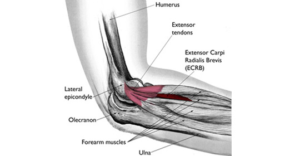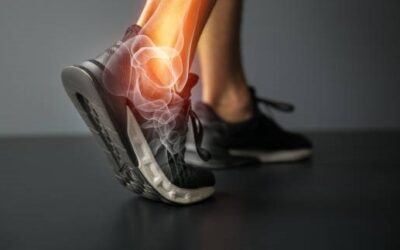A little introduction about tennis elbow and what it is:
So you decided to start working out again…
Maybe you decided it was time to up your weights in the gym…
But, now you can’t even lift your cup of coffee because of elbow pain. What happened?
Just taking an educated guess, it is likely lateral epicondylalgia (previously known as epicondylitis), or better known as ‘tennis elbow’. Can you get tennis elbow without playing tennis? The answer is YES.
In fact, only about 10% of those diagnosed with tennis elbow are actually tennis players.
So what is tennis elbow? It is typically an overuse injury to your wrist extensors (specifically common extensor tendon and extensor carpi radialis brevis) that causes microtears in the tendons. These muscles act to stabilize the wrist when the elbow is straight. Think about how much stress, strength, and power these muscles must have trying to stabilize your wrist when they start up by the elbow. It is a long way for the muscle to work.
 Why does it occur? The aforementioned extensor tendons may not be strong enough or conditioned enough to handle the load you have just placed on it.
Why does it occur? The aforementioned extensor tendons may not be strong enough or conditioned enough to handle the load you have just placed on it.
Pain may start as a slight burning during activities and maybe you notice some weakness. It can progress to where you have significant pain can with simple tasks such as lifting a glass, turning a doorknob, opening your car door, or even simply shaking someone’s hand. Pain is not severe, or even noticeable, at rest.
Risk Factors:
- Being between 30-50 years old
- Job requiring a lot of gripping and repetitive tasks (using a computer is a repetitive task)
- Racquet sports
So what should you do if you encounter these symptoms?…
DO NOT JUST REST, ICE, AND TAKE ANTI-INFLAMMATORIES
There is a reason why it occurred and just resting will not stop the issue from happening again.
Future blogs will talk about the treatment options, but your best option right now is to seek out a skilled physical therapist. They can help correctly diagnose to ensure this is what you have, give you guidance on active recovery strategies, and properly assist you with load management and returning to your active lifestyle and daily activities.
Feel free to fill out this form to schedule a phone call or in-person visit to discuss your symptoms and the best way for you to go about treating your pain.




